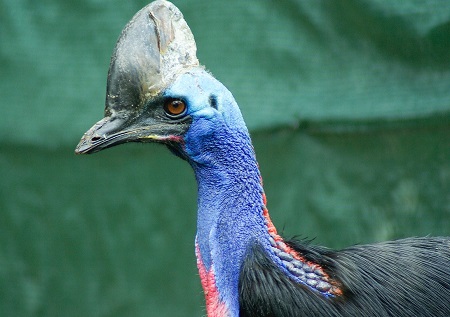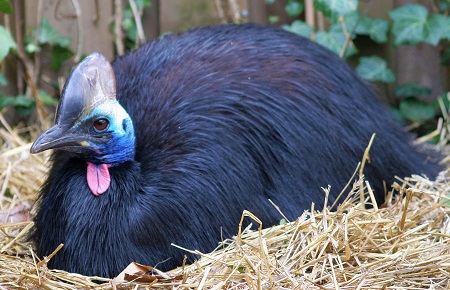Southern Cassowary
The Southern Cassowary, also known as the Double-Wattled Cassowary, the Australian Cassowary or the Two-Wattled Cassowary, is the largest and probably most well-known species of Cassowaries. It lives in the New Guinea lowland rain forests, and is slightly less common in northern Queensland, Australia. The Southern cassowary has stiff, bristly black plumage, a blue face and neck, red colors on the nape and two red wattles measuring around 17 – 20 cm. It has a horn-like brown casque, measuring around 15 – 17 cm on top of the head, and a bill that ranges in length from 10 to 19 cm.
The Southern cassowary is the third tallest bird on earth with height ranges from 127 to 170 cm. And the second largest bird on earth with weight ranges from 17 to 70 kg for adult birds. The female Southern cassowary is dominant and larger than the male with a longer casque, larger bill and brighter-colored bare parts.
The Southern Cassowary is a solitary bird, which pairs only in the breeding season, which takes place in late winter or spring. Female birds lay 3 – 4 bright pea-green eggs per each, that fade in color with time. The male Southern cassowary incubates the eggs and raise the chicks alone while the polygamous female plays no role in these parts.
The Southern Cassowary feeds mostly on fruit that has fallen to the ground, it also feeds on invertebrates and small vertebrates. Its diet of fallen fruits and fungi includes many species which are poisonous to humans as their digestive system is adapted to deal with the toxins safely.
| Place of origin | Queensland, New Guinea and eastern Indonesia |
| Use | Preservation |
| Weight | Male: 35 kg female: up to 60 kg |
| Egg color | Pea-green |




